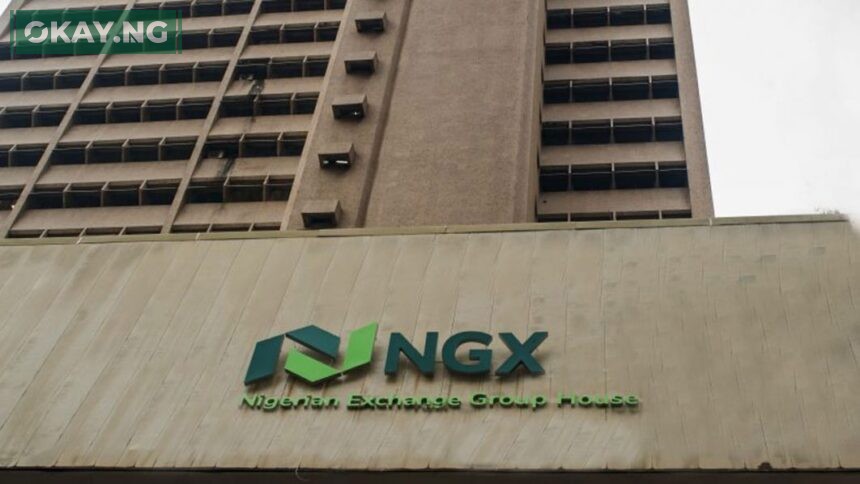The Nigerian Exchange Group (NGX) is the parent company of three subsidiaries: NGX Limited, NGX Regulation Limited, and NGX Real Estate Limited. NGX Limited is the operating company that runs the stock exchange, while NGX Regulation Limited is the independent regulatory arm, and NGX Real Estate Limited is the real estate company that manages the properties of the group.
The NGX was formerly known as the Nigerian Stock Exchange (NSE), before it was demutualized and rebranded on March 30, 2021, as part of its transformation into a profit-oriented and shareholder-owned entity.
The NGX aims to be Africa’s leading capital market infrastructure provider, offering a range of products and services to investors, issuers, and intermediaries.
Investing in the NGX can be a lucrative opportunity for both experienced and beginner investors, as it offers access to a large and diverse market, with more than 360 companies listed in various sectors and industries.
Investing in the NGX can also offer potential for high returns, as the NGX has historically outperformed other asset classes, such as bonds, real estate, and gold, in the long term. However, investing in the NGX also involves some risks and challenges, such as market volatility, currency fluctuations, and regulatory uncertainties.
Therefore, it is important to follow some steps and strategies to make informed and successful investment decisions on the NGX. In this article, we will provide a step-by-step guide on how to invest in the NGX, as well as answer some frequently asked questions about it.
Step 1: Find a stockbroker to open a brokerage account
The first step to invest in the NGX is to find a stockbroker who can facilitate your trades on your behalf. A stockbroker is a licensed professional who acts as an intermediary between you and the NGX, and who can execute your buy and sell orders, provide you with market information, and offer you financial advice. To find a stockbroker, you can visit the NGX website and check the list of registered stockbrokers, or you can ask for recommendations from friends, family, or colleagues who have experience in investing in the NGX. You should compare different brokers based on their fees, services, reputation, and customer support, and choose the one that suits your needs and preferences.
Once you have chosen a stockbroker, you need to open a brokerage account with them. A brokerage account is a type of account that allows you to buy and sell securities on the NGX. To open a brokerage account, you need to provide some personal and financial information, such as your name, address, phone number, email, bank account details, and identification documents. You also need to sign some agreements and forms, such as the Central Securities Clearing Systems (CSCS) account opening form, which is required to trade on the NGX. The CSCS is the clearing and settlement agency for the NGX, and it ensures that your trades are executed and settled in a timely and secure manner. Your stockbroker will guide you through the process of opening a brokerage account and a CSCS account, and will give you your account number and login details.
Step 2: Fund your stock brokerage account
The next step to invest in the NGX is to fund your brokerage account with the amount of money you want to invest. You can fund your account by transferring money from your bank account to your broker’s bank account, or by using other payment methods, such as debit cards, mobile money, or online platforms. You should check with your broker about the minimum amount required to open and maintain your account, as well as the fees and charges involved in funding your account. Once your account is funded, you can start trading on the NGX.
Step 3: Research the companies and securities you want to invest in
Before you buy or sell any securities on the NGX, you need to do some research and analysis on the companies and securities you are interested in. There are two main types of securities you can invest in on the NGX: shares and exchange-traded funds (ETFs). Shares are units of ownership in a company, and they give you the right to receive dividends and vote on important decisions. ETFs are collections of securities that track the performance of an index, a sector, or a commodity, and they offer diversification and lower costs. To research the companies and securities you want to invest in, you can use various sources of information, such as:
- The NGX website, which provides market data, company profiles, financial statements, news, and announcements.
- The company websites, which provide information about the company’s history, vision, mission, products, services, management, and performance.
- The financial newspapers, magazines, blogs, and websites, which provide news, analysis, opinions, and recommendations on the market and the companies.
- The stockbroker, who can provide you with market reports, research reports, and advice on the market and the companies.
You should look for various factors that affect the value and performance of the securities, such as:
- The earnings, revenue, growth, profitability, and cash flow of the company.
- The dividends, earnings per share, price-to-earnings ratio, and book value of the share.
- The sector, industry, and market trends and outlook.
- The competitive advantage, innovation, and customer satisfaction of the company.
- The risks, challenges, and opportunities facing the company and the sector.
- The social, environmental, and governance practices of the company.
You should also compare different securities based on their returns, risks, costs, and suitability for your investment goals and risk appetite. You should avoid investing in securities that you do not understand, or that are too risky, too expensive, or too speculative for you.
Step 4: Submit your trade order
Once you have decided what securities you want to buy or sell, you need to submit your trade order to your stockbroker. A trade order is an instruction to buy or sell a specific quantity and price of a security. There are different types of trade orders, such as:
- Market order: An order to buy or sell a security at the best available price at the time of execution.
- Limit order: An order to buy or sell a security at a specified price or better.
- Stop order: An order to buy or sell a security when it reaches a specified price, which triggers a market order.
- Stop-limit order: An order to buy or sell a security when it reaches a specified price, which triggers a limit order.
You should choose the type of order that suits your trading strategy and market conditions. You should also specify the validity of your order, such as:
- Day order: An order that expires at the end of the trading day if not executed.
- Good-till-cancelled (GTC) order: An order that remains valid until executed or cancelled by you.
- Good-till-date (GTD) order: An order that remains valid until a specified date or until executed or cancelled by you.
You can submit your trade order to your stockbroker by phone, email, online platform, or mobile app, depending on the services offered by your broker. You should confirm your order details and check your order status with your broker. You should also keep a record of your trade confirmations and statements, which show the details and costs of your transactions.
Step 5: Monitor your portfolio and review your performance
The last step to invest in the NGX is to monitor your portfolio and review your performance. Your portfolio is the collection of securities that you own, and it reflects your investment goals, risk appetite, and returns. You should monitor your portfolio regularly to track the changes in the value and performance of your securities, as well as the market movements and events that affect them. You should also review your performance periodically to evaluate the results and outcomes of your investment decisions, and to measure your progress towards your investment goals. You can use various tools and indicators to monitor your portfolio and review your performance, such as:
- The NGX website, which provides market data, indices, charts, and tools to track and analyze your portfolio and performance.
- The stockbroker, who can provide you with portfolio reports, performance reports, and feedback on your portfolio and performance.
- The financial newspapers, magazines, blogs, and websites, which provide market commentary, analysis, and tips to improve your portfolio and performance.
You should also make some adjustments and improvements to your portfolio and performance, such as:
- Rebalancing your portfolio: This means adjusting the weights and proportions of your securities to maintain your desired level of risk and return, and to align your portfolio with your investment goals and strategy.
- Diversifying your portfolio: This means adding more securities or sectors to your portfolio to reduce your exposure to specific risks and to increase your potential for returns.
- Optimizing your portfolio: This means reducing the costs and fees associated with your portfolio, such as brokerage commissions, taxes, and management fees, to increase your net returns.
- Learning from your mistakes: This means identifying and correcting the errors and biases that may have affected your investment decisions, such as overconfidence, greed, fear, or herd mentality, and to avoid repeating them in the future.












